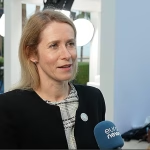Pakistan is making efforts to address its external financing issues by requesting a supplementary loan of 10 billion yuan (CNY) from China. This loan request highlights the fiscal pressures that Pakistan is currently facing. The Finance Minister of Pakistan, Muhammad Aurangzeb, urged China to increase the limits under the Currency Swap Agreement to CNY 40 billion, as the nation has fully utilised the existing CNY 30 billion Chinese trade facility for debt repayment. This request, if approved by Beijing, would amount to a total facility of approximately USD 5.7 billion.
In the past, Pakistan has sought increases in its debt limit, with China declining these appeals. However, this recent loan request comes after China extended the current USD 4.3 billion (CNY 30 billion) facility for an additional three years during the visit of Chinese Prime Minister Li Qiang. This extension also saw the debt repayment period for Pakistan extended to 2027. The Ministry of Finance did not specify the reasons behind the new loan request, but uncertainties regarding pipeline loans have been cited as a possible reason for the additional financial support.
In a separate move to address the financing gap, Pakistan accepted terms for a costly USD 600 million commercial loan, which raised concerns. The IMF clarified that this loan was not linked to the requirements of Pakistan’s USD 7 billion bailout package. Despite this, Aurangzeb later informed the National Assembly Standing Committee on Finance that the government secured USD 600 million in financing at an 11% interest rate for IMF program purposes.
The bilateral currency swap agreement between Pakistan and China, signed in December 2011, aimed to promote bilateral trade, foreign direct investment, and provide short-term liquidity support. In fiscal year 2021, the initial limit of the agreement was extended to 30 billion CNY for a period of three years, with maturity periods ranging from three months to one year. Pakistan has earlier sought an increase in its loan limit from China in November 2022 due to delays in loans from other bilateral and multilateral creditors.
Pakistan has primarily used the Chinese trade finance facility to repay foreign debts and stabilize its foreign currency reserves. Despite China’s support, Pakistan’s foreign exchange reserves remain insufficient to meet its debt obligations to China. Aurangzeb expressed gratitude to the Chinese government for its support in Pakistan’s socio-economic development and assistance in securing the IMF’s Extended Fund Facility. Additionally, Pakistan plans to issue an inaugural Panda bond in the Chinese market to diversify its financing options and improve economic reform. Both parties emphasized the importance of enhancing online payment settlements and integrating payment systems to strengthen their economic partnership.









